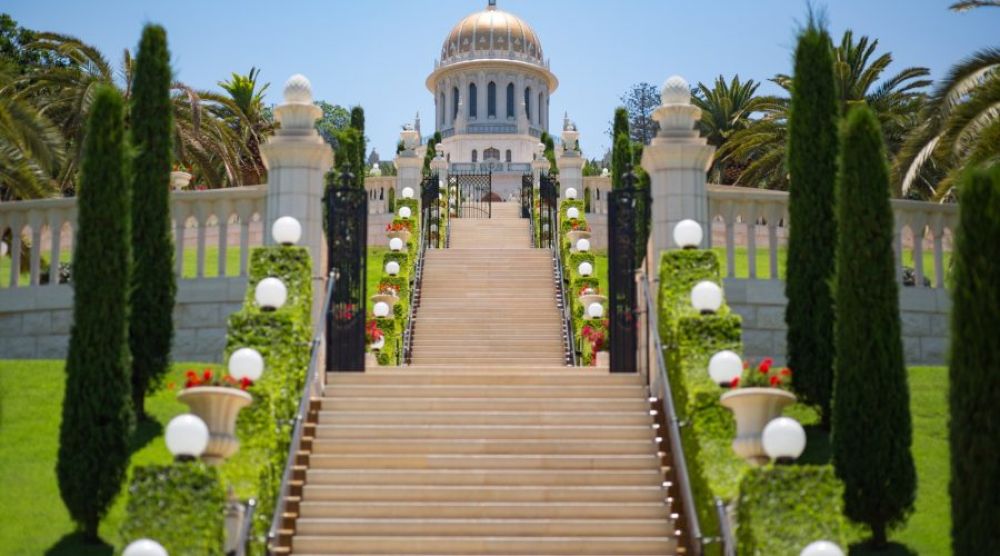

The Bahai Gardens, also known as the Hanging Gardens of Haifa, are one of the most stunning holy places and landmarks in Israel and a UNESCO World Heritage site. The terraced gardens surround the Shrine of the Bab on Mount Carmel in Haifa, Israel, which is the resting place of the Bahá'í Faith's prophet-herald, the Bab.
The history of the Bahai Gardens traces back to the late 19th and early 20th centuries, when the first Bahá'í leaders settled in the region and began creating beautiful gardens. The formal development of the gardens that can be seen today began in the 1980s under the guidance of Fariborz Sahba, who was appointed the architect of the Bahai Gardens. They were completed and opened to the public in 2001.
Since their completion, the Bahai Gardens have become a popular destination for tourists from all over the world, drawing hundreds of thousands of visitors each year. The spiritual significance of the site, combined with its architectural beauty and the panoramic views it offers of the city of Haifa and the Mediterranean Sea, make it a compelling destination for tourists of different cultures and backgrounds.
The centrepiece of the Bahai Gardens is the Shrine of the Bab, distinguished by its Golden Dome which was completed in 1953 and has since been an iconic symbol of Haifa. It consists of approximately 12,000 gold-coated bricks and is considered by Bahá'ís to be the second holiest shrine of their faith.
Visitors to the Bahai Gardens can enjoy free guided tours, which offer insights into the gardens' design, spiritual significance, and history, as well as spectacular views of the city and its surroundings. The serene atmosphere of the gardens also provides a personal space for reflection and meditation.
In recent years, with the rise of socially conscious tourism, the Bahai Gardens have emphasized their role in promoting values like unity, peace, and universal respect across differing cultures—themes that resonate strongly with the global traveler of today. This has contributed to the steady increase in the number of eco-friendly and cultural tours in the region.
The future of tourism at the Bahai Gardens looks promising. There is an ongoing commitment to maintain the site's pristine condition, promote sustainability, and facilitate intercultural dialogue and understanding through educational programs that complement the visitor experience.
The Bahai Gardens in Haifa—with their rich history, spiritual significance, and breathtaking aesthetic—are a testament to the beauty and diversity of human creativity and devotion, and they continue to captivate the hearts of travelers worldwide.